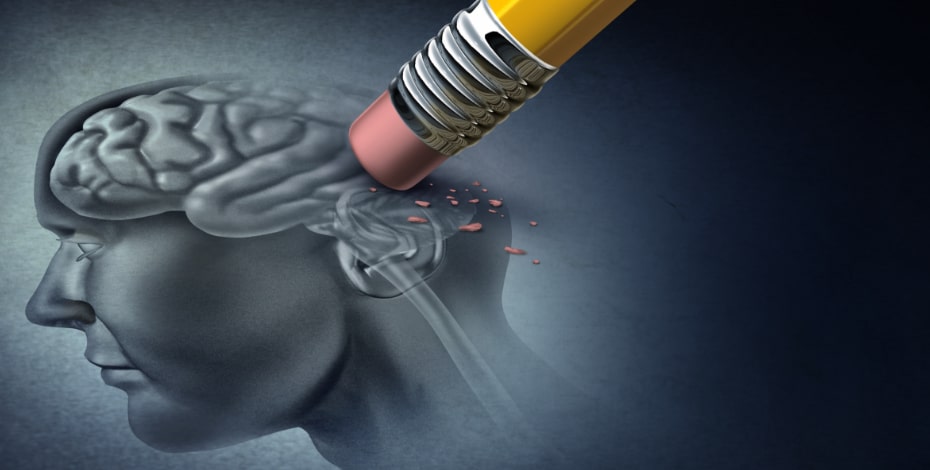
Five facts about dementia and physical activity

Associate Professor Michele Callisaya, Dr Kate Lawler and Dr Claudia Meyer contribute five evidence-based practice points about physical activity and working with people living with dementia.
1. Dementia is not an inevitable part of old age
Non-modifiable factors such as age and genetics are associated with increased risk of dementia. However, dementia is not an inevitable part of old age. An estimated 35 per cent of dementia cases may be attributed to modifiable risk factors. One of these modifiable risk factors is physical inactivity. Others include smoking, depression, social isolation, obesity, hypertension, hearing loss and diabetes (Livingston et al 2017).
2. Physical activity reduces the risk of dementia
Physical activity is beneficial for the management of many of the risk factors for dementia. This includes diabetes, hypertension and obesity—as well as for improving sleep and mood.
In addition to improving cardiovascular health, physical activity appears to have direct effects on the brain. An additional daily hour of light-intensity physical activity is associated with one year less of brain ageing—as measured by MRI (Spartano et al 2019). Potential mechanisms include reducing inflammation and oxidative stress, increasing new brain connections and making new neurons (Alty et al 2020). In addition, physical activity may also attenuate cognitive decline in people with mild cognitive impairment and dementia (Law et al 2020).
Some questions remain unanswered—Is there an optimal dose? Is aerobic, resistance or a combination of training more effective? Does physical activity only prevent certain types of dementia (Alty et al 2020)? As researchers seek to discover more, physiotherapists can remain confident in recommending physical activity as per World Health Organization (WHO) guidelines to reduce a range of adverse health outcomes including cognitive decline. WHO guidelines vary according to age group, but generally recommend at least 150 minutes of moderate-intensity (or 75 minutes of vigorous-intensity) aerobic activity—and muscle-strengthening activities at least two times a week.
3. Programs that include strength, balance and functional exercise can improve mobility for people living with dementia
People with dementia have greater levels of impairment in reaction time, muscle strength, coordination and balance (Taylor et al 2013). This, along with impaired cognition, may contribute to poorer mobility (Callisaya et al 2017). People with non-Alzheimer’s type dementia have greater impairments in mobility than those with Alzheimer’s disease (Allali et al 2016).
Moderate to high intensity multi-modal exercise (eg, balance, strength and functional exercises such as sit to stand) for a duration of three months or longer can improve balance, functional strength and mobility in people living with dementia in the community (Lewis et al 2017). Short-term (meaning two and a half to four months of 30 to 60 minute) multi-modal exercise programs, delivered in groups two to four times weekly, appear effective in improving balance and muscle strength in people with dementia living in residential care (Toots et al 2016, Bossers et al 2015).
A rapid review of non-pharmacological interventions also identified exercise to be beneficial for improving activities of daily living (Meyer & O’Keefe 2018). As in other groups, exercise should target deficits and be of sufficient intensity in order to effect change.
Treatment should follow the principles of care for people living with dementia (NHMRC 2016). Some strategies for working with people with dementia are:
- Poor memory: provide written material, reminders, repetition and spaced retrieval
- Poor attention: provide short but frequent sessions, a quiet environment, one-step instructions and allow a greater time to respond
- Poor executive function: pay greater attention to safety and provide assistance with planning exercise
- Poor visuospatial function: incorporate changes to the environment such as appropriate lighting and furniture with contrasting colours (remove patterned rugs)
- Incorporate exercise into everyday activities and interests.
4. Dementia isn’t just about memory—it is also associated with an increased risk of falls
Almost 70 per cent of people with dementia will fall at least once in a year (Taylor et al 2013). Poorer cognition, particularly in the domains of executive function and processing speed, a greater use of central nervous system-acting medications, behavioural and psychological problems may contribute to the increased risk.
Exercise interventions that include balance and functional training may be effective in preventing falls. Exercise was found to reduce falls in people with cognitive impairment in a meta-analysis of clinical trials (Sherrington et al 2017). As in people without dementia, risk assessment and an individualised treatment plan will be important and should include home hazard reduction (appropriate footwear, securing mats, bright tape on step edges and sensor lights for at night).
In residential care, a recent Cochrane review found no strong evidence to guide falls prevention strategies (Cameron et al 2018). Since this review, an Australian study (Hewitt et al 2018) reported promising findings that six months of progressive resistance and balance training for one hour, twice per week followed by a maintenance phase of six months reduced the rate of falls by 55 per cent. However, only half the participants had cognitive impairment. Other approaches may be required in residential care including modifying the environment, understanding and addressing behaviour associated with needs such as pain, and personalised care mapping.
5. How you engage and interact with people with dementia will affect how they respond to you
Neuropsychiatric symptoms associated with dementia can be distressing for the person, their families and healthcare professionals. These symptoms are often in response to the person with dementia’s personal, social or physical environment and include agitation, wandering, apathy and low mood (Livingston et al 2017). Identifying the cause, making a plan, and evaluating its effectiveness are key.
Non-pharmacological interventions should be the first option (Livingston et al 2017). A recent meta-analysis showed moderate quality evidence that exercise might help reduce neuropsychiatric symptoms (Law et al 2020). Most studies were conducted within the residential care home setting, with a dearth of evidence from the community.
Several recommendations from existing guidelines for best practice dementia care (NSW Ministry of Health & RANZCP 2013) are relevant when considering physical activity for the person with dementia experiencing neuropsychiatric symptoms:
- incorporate person-centred practice to identify individual needs and preferences (understanding the socio-cultural background as relevant for physical activity, understanding what is meaningful activity)
- use open and engaging communication, including body language, tone of voice, and modified verbal communication if required
- identify environmental factors that may exacerbate or calm symptoms (lighting, noise and surrounding activity levels)
- identify unmet needs like pain, boredom, loneliness and physical health
- engage the carer or other trusted person as an exercise buddy
- draw on residual functional capacity and build on existing strengths.
- References
Livingston G, Sommerlad A, Orgeta V, Costafreda SG, Huntley J, Ames D, Ballard C, Banerjee S, Burns A, Cohen-Mansfield J et al: Dementia prevention, intervention, and care. Lancet 2017, 390(10113):2673-2734.
Spartano NL, Davis-Plourde KL, Himali JJ, Andersson C, Pase MP, Maillard P, DeCarli C, Murabito JM, Beiser AS, Vasan RS et al: Association of Accelerometer-Measured Light-Intensity Physical Activity With Brain Volume: The Framingham Heart Study. JAMA Netw Open 2019, 2(4):e192745.
Alty J, Farrow M, Lawler K: Exercise and dementia prevention. Pract Neurol 2020.
Law CK, Lam FM, Chung RC, Pang MY: Physical exercise attenuates cognitive decline and reduces behavioural problems in people with mild cognitive impairment and dementia: a systematic review. J Physiother 2020, 66(1):9-18.
Taylor ME, Delbaere K, Lord SR, Mikolaizak AS, Close JC: Physical impairments in cognitively impaired older people: implications for risk of falls. Int Psychogeriatr 2013, 25(1):148-156.
Callisaya ML, Launay CP, Srikanth VK, Verghese J, Allali G, Beauchet O: Cognitive status, fast walking speed and walking speed reserve-the Gait and Alzheimer Interactions Tracking (GAIT) study. Geroscience 2017, 39(2):231-239.
Allali G, Annweiler C, Blumen HM, Callisaya ML, De Cock AM, Kressig RW, Srikanth V, Steinmetz JP, Verghese J, Beauchet O: Gait phenotype from mild cognitive impairment to moderate dementia: results from the GOOD initiative. Eur J Neurol 2016, 23(3):527-541.
Muir SW, Speechley M, Wells J, Borrie M, Gopaul K, Montero-Odasso M: Gait assessment in mild cognitive impairment and Alzheimer's disease: the effect of dual-task challenges across the cognitive spectrum. Gait Posture 2012, 35(1):96-100.
Lewis M, Peiris CL, Shields N: Long-term home and community-based exercise programs improve function in community-dwelling older people with cognitive impairment: a systematic review. J Physiother 2017, 63(1):23-29.
Toots A, Littbrand H, Lindelof N, Wiklund R, Holmberg H, Nordstrom P, Lundin-Olsson L, Gustafson Y, Rosendahl E: Effects of a High-Intensity Functional Exercise Program on Dependence in Activities of Daily Living and Balance in Older Adults with Dementia. J Am Geriatr Soc 2016, 64(1):55-64.
Bossers WJ, van der Woude LH, Boersma F, Hortobagyi T, Scherder EJ, van Heuvelen MJ: A 9-Week Aerobic and Strength Training Program Improves Cognitive and Motor Function in Patients with Dementia: A Randomized, Controlled Trial. Am J Geriatr Psychiatry 2015, 23(11):1106-1116.
Meyer C, O'Keefe F: Non-pharmacological interventions for people with dementia: A review of reviews. Dementia (London) 2018:1471301218813234. Guideline Adaptation Committee: Clinical Practice Guidelines and Principles of Care for People with Dementia. In. Sydney: NHMRC Partnership Centre for Dealing with Cognitive and Related Functional Decline in Older People.; 2016.
Sherrington C, Michaleff ZA, Fairhall N, Paul SS, Tiedemann A, Whitney J, Cumming RG, Herbert RD, Close JCT, Lord SR: Exercise to prevent falls in older adults: an updated systematic review and meta-analysis. Br J Sports Med 2017, 51(24):1750-1758.
Cameron ID, Dyer SM, Panagoda CE, Murray GR, Hill KD, Cumming RG, Kerse N: Interventions for preventing falls in older people in care facilities and hospitals. Cochrane Database Syst Rev 2018, 9:CD005465.
Hewitt J, Goodall S, Clemson L, Henwood T, Refshauge K: Progressive Resistance and Balance Training for Falls Prevention in Long-Term Residential Aged Care: A Cluster Randomized Trial of the Sunbeam Program. J Am Med Dir Assoc 2018, 19(4):361-369.
NSW Ministry of Health and the Royal Australian and New Zealand College of Psychiatrists: Assessment and Management of People with Behavioural and Psychological Symptoms of Dementia (BPSD) - A Handbook for NSW Health Clinicians. In.; 2013.
© Copyright 2025 by Australian Physiotherapy Association. All rights reserved.





